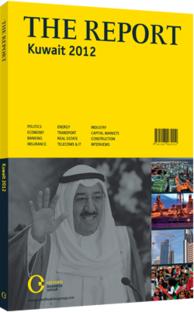Engaging investors: A mix of old and new approaches to courting the private sector
Under the National Development Plan (NDP) and Vision 2035, the government is committed to spending vast sums on construction and infrastructure projects over the next two decades. Although liquidity in the public sector is high, many of these projects will require significant private investment to come to fruition. To attract investors, the authorities plan to offer numerous public-private partnership (PPP) opportunities.
BOTS: Most PPP construction projects under the NDP are expected to follow a build-operate-transfer (BOT) model, wherein a private firm builds and manages a facility for a fixed period before transferring ownership to the government. The current legal framework governing BOT contracts in Kuwait dates back to Law 7 of 2008. Under Law 7, all government bodies forming BOT agreements that involve state land must get permission from a “supreme committee” of senior ministers and officials. In addition, the law sets a contract limit of 30 years, with 40-year terms available in special cases. Furthermore, for all BOT contracts above KD60m ($216.3m), the law calls for the establishment of a special purpose vehicle (SPV) formed as a joint stock company. In most cases, the firm executing the project retains 10% of shares in the SPV, with another 40% offered to other companies at public auction and 50% reserved for public subscription to Kuwaiti nationals.
A FAVOURED MODEL: The BOT model has several advantages: it allows the state to attract private investment but still retain control of assets; it facilitates technology transfer and the sharing of international best practices; and by requiring private investors to bear most of the construction costs, this approach reduces the public sector’s financial risk. This latter point is indeed crucial given that Kuwait’s heavy reliance on government revenue is regarded as unsustainable.
For private investors, BOT contracts can offer strong returns if developers are given adequate time to generate revenue and recoup construction costs. In Kuwait, the current 30-year BOT window is far more generous the 20-year timeframe that prevailed for much of the past two decades. Perhaps most importantly, BOT schemes give private developers access to land, which is a premium commodity considering over 90% of the country’s land mass is controlled by the government.
The BOT model has often been successful at delivering major development projects in Kuwait over the past 20 years, especially in the areas of infrastructure, power, real estate and transportation. According to Osama Refaei, the general manager of construction and engineering at Kuwait Dynamics, “In the past two decades we have seen successful, large-scale BOT projects in nearly every sector of the economy. The model has flourished because the government has been able to mitigate risk and hire quality developers, while the private sector has been able to take on unique ventures and generate profits.”
One successful BOT venture has been the Sulaibiya Wastewater Treatment and Reclamation Plant, which was built by Germany’s Philipp Holzmann and Kuwait’s Kharafi Group in 2002-04 at a cost of KD116m ($418.18m). It is the first facility of its kind in the Middle East and one of the largest the world. Both parties operate the plant under the 30-year concession.
NEW APPROACHES: Although the BOT approach has a strong track record in Kuwait, the government is keen to explore other PPP models to boost private sector participation. One agency investigating new PPP opportunities is the Partnerships Technical Bureau (PTB).
According to local reports, the PTB plans to structure 24 private sector projects worth $21bn.
One project that represents a slight break from the country’s traditional PPP approach is the Kuwait Health Assurance Company (KHAC), a public-private health organisation that will begin providing health insurance to the expatriate population in 2015, and will oversee the building of three new hospitals and 15 health centres. Whereas BOT contracts have traditionally been used to achieve a narrow purpose, such as the construction and management of malls, this venture is part of an effort to privatise much of the health care system.
You have reached the limit of premium articles you can view for free.
Choose from the options below to purchase print or digital editions of our Reports. You can also purchase a website subscription giving you unlimited access to all of our Reports online for 12 months.
If you have already purchased this Report or have a website subscription, please login to continue.

